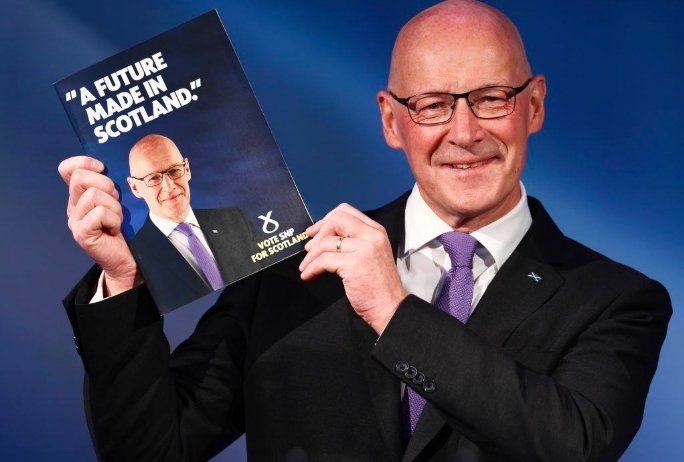First Minister John Swinney launched a bold new paper on Scottish independence in Edinburgh on October 8, 2025, arguing that breaking from the United Kingdom would give Scotland a fresh start to build a stronger economy and fairer society. The document, titled A Fresh Start with Independence, outlines why Scotland needs to go it alone and details proposals for everything from rejoining the European Union to boosting household incomes by over 10,000 pounds per year.
This move comes as the Scottish National Party ramps up efforts ahead of the 2026 Holyrood election, with Swinney claiming the limits of devolution have been reached under Westminster control. The paper draws on recent economic struggles in the UK, like rising bills and stagnant living standards, to make the case that independence offers real solutions tailored to Scotland’s resources and people.
Why Scotland Needs Independence Now
The Scottish Government points to years of underperformance within the UK as the main reason for pushing independence. Officials argue that Westminster policies have held back Scotland’s vast potential in energy, education, and innovation, leading to lower growth compared to similar small nations in Europe.
Recent data shows Scotland’s economy lagging behind countries like Ireland and Denmark, which have thrived after choosing their own paths. The paper highlights how Brexit and UK fiscal rules have worsened the situation, with Scotland facing higher energy costs and less control over trade deals. Swinney emphasized during the launch that independence would end this cycle and allow Scotland to focus on its strengths, such as renewable energy and a skilled workforce.
Experts note that public support for independence hovers around 46 percent as of early 2025, up slightly from previous years but still trailing opposition at 54 percent. This comes amid broader frustrations with UK-wide issues, including the cost of living crisis that has pushed many Scots to rethink the union.

A New Economic Model for Scotland
Independence would mean a complete overhaul of Scotland’s economy, not just tweaks to the current UK system. The government proposes transferring all economic powers from Westminster to Holyrood, enabling a coherent strategy that brings together business, workers, and policymakers for shared growth.
Key ideas include using Scotland’s oil, gas, and green energy reserves to fund public services without relying on UK subsidies. The paper suggests this could close Scotland’s fiscal gap, estimated at over 6 percent of GDP, through smarter taxes and investments. For everyday people, it promises higher wages, better job security, and reduced inequality by prioritizing fair pay and worker rights.
To illustrate potential gains, consider these projected benefits based on matching the performance of comparable European nations:
- Household income boost: Up to 10,000 pounds more per year through targeted growth.
- NHS funding: Extra resources to cut waiting times and hire more staff.
- EU rejoin: Access to single market for easier trade and migration.
The vision also stresses a consensual approach, where decisions reflect Scotland’s unique culture and size, avoiding the top-down style seen in larger economies.
Lessons from Ireland’s Success Story
Scotland can learn a lot from Ireland, a nation with similar history and challenges that turned independence into economic triumph. The paper details how Ireland broke free from overreliance on the UK after joining what became the EU in 1973, diversifying trade and boosting growth.
Before that shift, Ireland struggled with slow expansion tied to Britain’s sluggish economy. Post-EU entry, exports to the UK dropped while EU trade soared, helping Ireland surpass the UK in GDP and national income by 2000. This transformation created a more resilient economy focused on tech, pharma, and services.
The Scottish Government uses this as a blueprint, suggesting independence would let Scotland reduce UK dependence and tap EU markets for similar results. Table 1 below, adapted from economic analyses, shows Ireland’s trade pivot:
| Year | UK Exports (%) | EU Exports (%) | GDP per Capita (vs UK) |
|---|---|---|---|
| 1973 | 40 | 30 | Below UK average |
| 1990 | 25 | 45 | Near UK average |
| 2000 | 15 | 60 | 25% above UK |
| 2024 | 12 | 65 | 50% above UK |
Such data underscores the paper’s claim that strategic choices, not size, drive success for nations like Scotland.
Public and Political Reactions
Reactions to the paper have been swift and divided, reflecting Scotland’s ongoing debate on independence. Pro-independence voices praise it as a realistic roadmap, with social media buzzing about the economic promises and EU return. One recent poll from September 2025 showed 52 percent support if tied to better living standards, a slight uptick from March figures.
Critics, including the Institute for Fiscal Studies, warn of hidden costs like transition deficits and potential tax hikes in the early years. Unionist politicians call it a distraction from pressing issues like child poverty and NHS strains, pointing out that Scotland’s current deficit relies on UK support. On platforms like Reddit, users debate the feasibility, with some excited about the fresh start and others skeptical of the fiscal math.
YouTube discussions and news clips from the launch event highlight Swinney’s passion, but also underscore the need for clear answers on currency and borders. Overall, the paper has reignited conversations, with many Scots weighing if independence truly solves daily problems.
Road to a Second Referendum
The path forward hinges on the 2026 election, where Swinney wants an SNP majority to trigger talks for a new vote. The government argues this would give a democratic mandate, bypassing Supreme Court blocks from 2022. If successful, independence negotiations could follow, aiming for a smooth transition within a few years.
This builds on earlier papers like the September 2025 Your Right to Decide, which stressed Scotland’s self-determination. Challenges remain, including UK government resistance under Prime Minister Keir Starmer, who dismissed the plans as election tactics. Yet, with global events like energy crises boosting Scotland’s leverage, proponents see momentum building.
As Scotland approaches this crossroads, the paper serves as a call to action for voters to shape their future.
What do you think of this independence vision? Share your views in the comments below and spread the word to keep the conversation going.


















